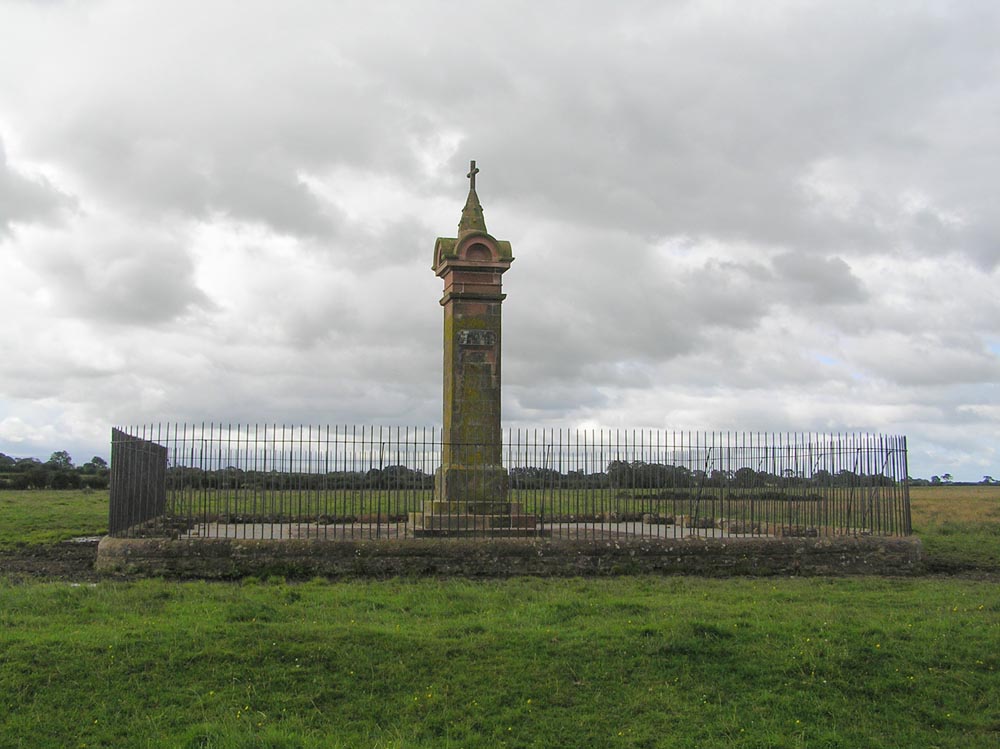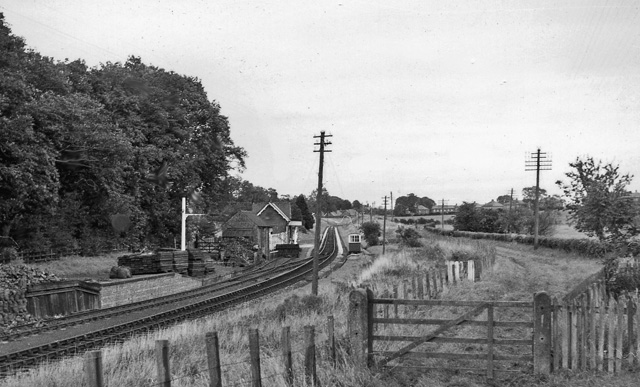Burgh-by-Sands on:
[Wikipedia]
[Google]
[Amazon]
Burgh by Sands () is a village and
 The line of
The line of
 Public transport currently consists of a bus service from Carlisle. As of September 2018, it is run four times daily by Stagecoach.
Public transport currently consists of a bus service from Carlisle. As of September 2018, it is run four times daily by Stagecoach.September 2018 bus timetable
/ref>
Cumbria County History Trust: Burgh-by-Sands
(nb: provisional research only - see Talk page)
Burgh by Sands Parish Council
{{DEFAULTSORT:Burgh By Sands Villages in Cumbria Civil parishes in Cumbria Cumberland (unitary authority)
civil parish
In England, a civil parish is a type of administrative parish used for local government. It is a territorial designation which is the lowest tier of local government. Civil parishes can trace their origin to the ancient system of parishes, w ...
in the Cumberland unitary authority area of Cumbria
Cumbria ( ) is a ceremonial county in North West England. It borders the Scottish council areas of Dumfries and Galloway and Scottish Borders to the north, Northumberland and County Durham to the east, North Yorkshire to the south-east, Lancash ...
, England, situated near the Solway Firth
The Solway Firth is an inlet on the west coast of Great Britain, forming part of the border between England and Scotland. The firth (a Scottish term for an inlet of the sea) divides Cumbria (including the Solway Plain) from Dumfries and Gallow ...
. The parish includes the village of Burgh by Sands along with Longburgh, Dykesfield, Boustead Hill, Moorhouse and Thurstonfield. It is notable as the site of the first recorded North African (Mauri
Mauri (from which derives the English term "Moors") was the Latin designation for the Berber population of Mauretania, located in the west side of North Africa on the shores of the Mediterranean Sea, Mauretania Tingitana and Mauretania Caesarien ...
) military unit in Roman Britain, garrisoning the frontier fort of Aballava on Hadrian's Wall
Hadrian's Wall (, also known as the ''Roman Wall'', Picts' Wall, or ''Vallum Aelium'' in Latin) is a former defensive fortification of the Roman province of Roman Britain, Britannia, begun in AD 122 in the reign of the Emperor Hadrian. Ru ...
in the 3rd century AD. It is also where Edward I of England
Edward I (17/18 June 1239 – 7 July 1307), also known as Edward Longshanks and the Hammer of the Scots (Latin: Malleus Scotorum), was King of England from 1272 to 1307. Concurrently, he was Lord of Ireland, and from 1254 ...
died in 1307.
According to the 2011 census the parish had a population of 1,176. The village is about west of Carlisle city centre. The village has a primary school, a pub and a post office. It also has a statue of Edward I at some distance to the north. Burgh was on the Carlisle Navigation canal from 1823 to 1853, after which it was served by the Port Carlisle railway, which was built on the bed of the canal, until its closure in 1932. From 1856 to 1964, railway trains operating on the Carlisle to Silloth line once again stopped at Burgh-by-Sands station.
Etymology
Burgh is named from the 'burh' or fort on Hadrian's Wall, which passed through here and ended at Bowness-on-Solway to the west. ('Burh' isOld English
Old English ( or , or ), or Anglo-Saxon, is the earliest recorded form of the English language, spoken in England and southern and eastern Scotland in the Early Middle Ages. It developed from the languages brought to Great Britain by Anglo-S ...
for 'fortified place', 'town' or 'manor house').
History
 The line of
The line of Hadrian's Wall
Hadrian's Wall (, also known as the ''Roman Wall'', Picts' Wall, or ''Vallum Aelium'' in Latin) is a former defensive fortification of the Roman province of Roman Britain, Britannia, begun in AD 122 in the reign of the Emperor Hadrian. Ru ...
runs through the village, and the site once was that of a major Roman fort, Aballava. It is also the death-place of King Edward I of England
Edward I (17/18 June 1239 – 7 July 1307), also known as Edward Longshanks and the Hammer of the Scots (Latin: Malleus Scotorum), was King of England from 1272 to 1307. Concurrently, he was Lord of Ireland, and from 1254 ...
.
In the 12th century, Burgh by Sands Castle and lands of Burgh by Sands belonged to members of the Feudal barony of Burgh by Sands, among them Ada de Engaine. Her granddaughter's second marriage founded a younger branch of the Moulton family, a branch of which held this castle in the 13th century. In the 14th century the Dacre family inherited it by marriage to the heiress.
King Edward I
Edward I (17/18 June 1239 – 7 July 1307), also known as Edward Longshanks and the Hammer of the Scots (Latin: Malleus Scotorum), was King of England from 1272 to 1307. Concurrently, he was Lord of Ireland, and from 125 ...
, while on his way to war against the Scots, died of dysentery
Dysentery ( , ), historically known as the bloody flux, is a type of gastroenteritis that results in bloody diarrhea. Other symptoms may include fever, abdominal pain, and a feeling of incomplete defecation. Complications may include dehyd ...
on the marshes near Burgh, and his corpse lay in state at the village's 12th-century church until its eventual removal to Westminster Abbey
Westminster Abbey, formally titled the Collegiate Church of Saint Peter at Westminster, is an Anglican church in the City of Westminster, London, England. Since 1066, it has been the location of the coronations of 40 English and British m ...
. There is an impressive monument on the marshes erected in 1685 to mark the place where he died. It is 1 miles NNW of the village, is signposted and can be reached on foot.
St Michael's Church
The Church of St Michael, is afortified church
A fortified church is a church that is built to serve a defensive role in times of war. Such church (building), churches were specially designed to incorporate military features, such as thick walls, battlements, and embrasures. Others, such as t ...
built with stone from the Roman wall on the site of a Norman church. It has a broad west tower with a base dating from the mid-14th century (first built in 1360) and apart from the 19th-century north aisle windows, the rest is Early English. The tower, which can only be accessed from within the church, is designed for defence and the ground floor is tunnel-vaulted. The top of the tower is probably 18th century. The internal door to the tower is a yett, a fortified iron door to repel invaders. The church is remarkable for having had two defensive towers, one at each end, a measure of the perceived threat from Scottish raiders. The east tower is now used as the vestry
A vestry was a committee for the local secular and ecclesiastical government of a parish in England, Wales and some English colony, English colonies. At their height, the vestries were the only form of local government in many places and spen ...
, but to this day the church has no east window. More recently the east tower has been lowered to match the roof of the church, so from outside it is not immediately recognisable as a tower.
Governance
The parish falls in theelectoral ward
A ward is a local authority area, typically used for electoral purposes. In some countries, wards are usually named after neighbourhoods, thoroughfares, parishes, landmarks, geographical features and in some cases historical figures connected t ...
of Burgh. This wards stretches beyond the boundaries of Burgh by Sands with a total population taken at the 2011 Census of 2,117.
Transport
 Public transport currently consists of a bus service from Carlisle. As of September 2018, it is run four times daily by Stagecoach.
Public transport currently consists of a bus service from Carlisle. As of September 2018, it is run four times daily by Stagecoach./ref>
See also
* Drumburgh *List of English and Welsh endowed schools (19th century)
This is a list of some of the endowed schools in England and Wales existing in the early part of the 19th century. It is based on the antiquarian Nicholas Carlisle's survey of "Endowed Grammar Schools" published in 1818 with descriptions of 475 sc ...
* Listed buildings in Burgh by Sands
* North End, Cumbria
References
External links
Cumbria County History Trust: Burgh-by-Sands
(nb: provisional research only - see Talk page)
Burgh by Sands Parish Council
{{DEFAULTSORT:Burgh By Sands Villages in Cumbria Civil parishes in Cumbria Cumberland (unitary authority)